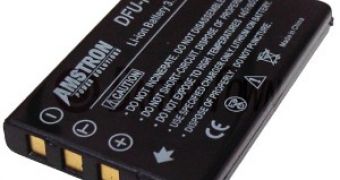Lithium-ion batteries are a type of rechargeable batteries that work by exploiting the movement of lithium ions between the anode and the cathode. Due to their low weight to power ratio, lack of memory effect and the slow rate of charge loss, they are currently the most popular type of rechargeable batteries available on the market. They are generally used to power portable electronics, but their applications can reach as far as the automotive and aerospace industry.
Li-ion batteries also have a bad habit of bursting into flames or even exploding when mishandled, which is no fun especially when equipping a device costing several thousands of dollars. About two years ago, major companies such as Apple or Toshiba felt the full impact of such anomalous behavior, when they were forced to recall and replace a vast number of Li-ion batteries due to fire hazards.
But what determines Li-ion batteries to heat up to dangerous levels? In order to understand the cause, one must first know several basic notions regarding batteries. Typical batteries have two main terminals, the anode (positively charged) and the cathode (negatively charged). Electric energy is stored inside them in electrochemical compounds that mix in order to release free electrons, which are then collected at the cathode and supplied to the powered device in the form of electric current.
The electrons flow from the cathode through the device and then to the anode, thus forming an electric circuit. Batteries are classified according to the type of electrochemical used to manufacture it; in the case of Li-ion batteries this is a liquid compound containing lithium, which is also very flammable. Alternatively, during the manufacturing process some metal fragments are also created inside the electrochemical liquid and although they cannot be completely eliminated, their size and number can be limited during production.
The anode and the cathode regions of the battery are isolated from each other by a separator, which can be easily punctured by the metal fragments in case the battery experiences a rise in temperature. When this happens a short circuit is established between the anode and the cathode leading to a further increase in temperature.
The battery is then at risk of melting or bursting into flames. Furthermore, because the container holding the electrochemical is completely sealed from the medium, the excessive rise in temperature can cause it to give way under pressure and explode.

 14 DAY TRIAL //
14 DAY TRIAL //